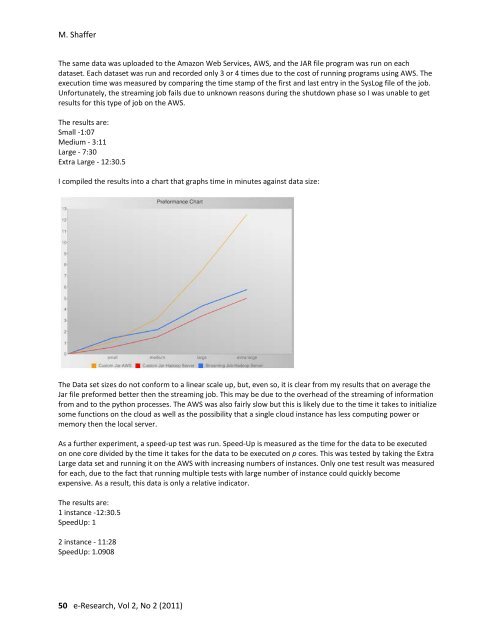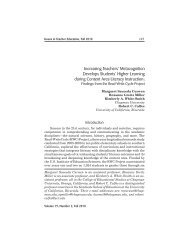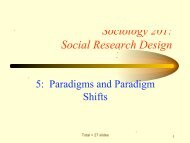e-Research: A Journal of Undergraduate Work - Chapman University
e-Research: A Journal of Undergraduate Work - Chapman University
e-Research: A Journal of Undergraduate Work - Chapman University
You also want an ePaper? Increase the reach of your titles
YUMPU automatically turns print PDFs into web optimized ePapers that Google loves.
M. Shaffer<br />
The same data was uploaded to the Amazon Web Services, AWS, and the JAR file program was run on each<br />
dataset. Each dataset was run and recorded only 3 or 4 times due to the cost <strong>of</strong> running programs using AWS. The<br />
execution time was measured by comparing the time stamp <strong>of</strong> the first and last entry in the SysLog file <strong>of</strong> the job.<br />
Unfortunately, the streaming job fails due to unknown reasons during the shutdown phase so I was unable to get<br />
results for this type <strong>of</strong> job on the AWS.<br />
The results are:<br />
Small -1:07<br />
Medium - 3:11<br />
Large - 7:30<br />
Extra Large - 12:30.5<br />
I compiled the results into a chart that graphs time in minutes against data size:<br />
The Data set sizes do not conform to a linear scale up, but, even so, it is clear from my results that on average the<br />
Jar file preformed better then the streaming job. This may be due to the overhead <strong>of</strong> the streaming <strong>of</strong> information<br />
from and to the python processes. The AWS was also fairly slow but this is likely due to the time it takes to initialize<br />
some functions on the cloud as well as the possibility that a single cloud instance has less computing power or<br />
memory then the local server.<br />
As a further experiment, a speed-up test was run. Speed-Up is measured as the time for the data to be executed<br />
on one core divided by the time it takes for the data to be executed on p cores. This was tested by taking the Extra<br />
Large data set and running it on the AWS with increasing numbers <strong>of</strong> instances. Only one test result was measured<br />
for each, due to the fact that running multiple tests with large number <strong>of</strong> instance could quickly become<br />
expensive. As a result, this data is only a relative indicator.<br />
The results are:<br />
1 instance -12:30.5<br />
SpeedUp: 1<br />
2 instance - 11:28<br />
SpeedUp: 1.0908<br />
50 e-<strong>Research</strong>, Vol 2, No 2 (2011)







